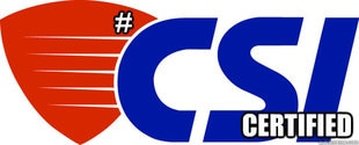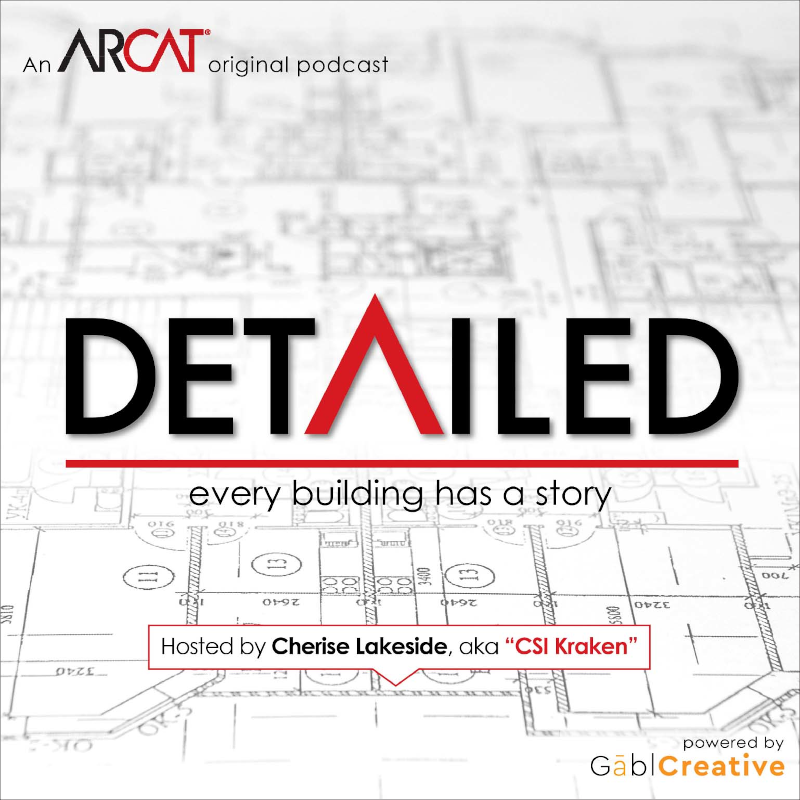|
Contributed by Sheldon Wolfe For many years, I was one of the instructors for my CSI chapter's certification classes. In addition to explaining what CSI's practice manuals say, I liked to include horror stories - real-world examples of the ways people found to really mess up a project. One of my favorite stories came from a public sector waste treatment agency. The project was a relatively simple addition to an existing building at one of the waste treatment facilities, to provide shower and locker rooms for the employees.
The agency had hired an architecture/engineering firm to design the addition, and to prepare bidding documents. As the bid opening date approached, the owner began getting calls from mechanical subcontractors, who asked, "Did you want to use fresh water or effluent to serve the baptismal font?" Apparently, the mechanical engineer had reused specifications from another project, which happened to be a church. Obviously, assuming the specifications had been submitted for review, there should have been opportunities to discover and correct the error, but had the engineer started with master specifications, the baptismal font almost certainly would not have appeared in the specifications for this project. This is an amusing result of the time-honored way of writing specifications: take the specs from the last project, change the client's name, and - voila! - they're done. While this may be a quick way to produce specifications, it also is a way to virtually guarantee those specifications will be incorrect. There are times when this quick-fix approach almost works; certainly, in a project with multiple bid packs, there will be a great consistency and repetition from one bid pack to the next. An obvious example is waterproofing, which will probably be included in the foundations bid pack, though it could appear in later bid packs. Either way, it will probably appear only once. Given the nature of the product, it will be easy to either add or delete it as the project moves forward. Other materials are more complicated. Cast-in-place concrete, for example, could all appear in one bid pack, but it's just as likely to appear in the footings or footings/foundations bid pack, in the shell bid pack, and in the fit-out bid pack. If it's all specified at one time, it will be easy to remember to take the section out when it's not needed, but what if it appears in more than one bid pack? Ideally, each time a section is used, it will be edited down to address only what is needed for each bid pack. My experience has been that the design team often has trouble deciding which concrete is used in each bid pack, so there is a tendency to use essentially the same specifications each time, and let the contractor figure out which parts of it apply. The same can be said about masonry, insulation, hardware, and other products that may be required at different times. Reusing old specifications also is tempting when designing additions to existing buildings, or doing more work for a regular client, but even then, there will be differences. The older the reused specifications are, the greater the certainty that they will be incorrect. Codes change, reference standards change, companies go out of business, products are discontinued or changed, and owner preferences change. A design firm's practices also change; most firms are more green than they were even a few years ago, and specify different products. Most people seem to think specifications are boilerplate. In fact, they are living documents, which must be updated continually to incorporate all of these changes. Traditional specification editing is a subtractive process. The specifier starts with a master specification, which contains many options. In most cases, offices pre-edit master specifications so to minimize editing for the types of work they do most often. These master specifications are further edited for each project by removing unnecessary information, and, frequently, adding in missing information. The problem with reusing specifications is, to accurately fit the needs of another project, the specifier must remember to add things that had been deleted, and to remove things that no longer are needed. Both require thought, but it's far easier to delete things that aren't needed than to remember what's missing. Without exception, every time I have to reuse specifications from another project, even from an earlier bid pack for the same project, we discover late in the construction documents phase that we don't need something that was in the reused specs, or that something we do need wasn't there. Unfortunately, these things sometimes are not discovered until the bidding documents have been issued, or until construction is underway. When reusing specifications, they must be compared to the masters, to identify things that are have been deleted, or that may have changed as the masters evolved. And, they must be reviewed item by item with the team to make sure what's in them corresponds with requirements for the current project. I haven't kept track of how long it takes to review and update a reused specification, but it seems it would be just as easy and fast to start with unedited masters. Of course, the reason we're using old specs is that we don't have time to start over, so the review and re-editing is either ignored or superficial. Isn't it amazing how often we can't find time to get the documents right before they're issued, but we somehow find time to fix them later?
6 Comments
Contributed by Eric D. Lussier Whether an emerging professional, new to your company or new to your position, personal advancement through a professional certification is a tremendous asset in more ways than one.
In the construction industry, the certifications through the Construction Specifications Institute (CSI) carry weight with many of the major players of a project – the owner, the architect, the general contractor, product representative or construction manager. CSI’s Construction Documents Technologist (CDT) program is the prerequisite to CSI’s advanced Certifications: Certified Construction Contract Administrator (CCCA); Certified Construction Specifier (CCS) and Certified Construction Product Representative (CCPR). Whether you are new to the construction industry or a 50 year veteran, the CDT program can and will help you with an overall building project. If you find yourself lost in a 1500 page, 32 division project manual, the CDT can help you understand where to find what you are looking for and just how that project unfolds from conception to delivery. I can tell you first hand how much attaining the CDT has assisted me in my job. Before I started attending my CDT study group many years back, I focused mainly on Division 9 of architectural specifications, where you can find the sport flooring that I represent. Week after week of studying and learning from the (now former) Project Resource Manual, my eyes were opened to just how much broader of a scope a project is. From project conception right through to commissioning, I was able to more thoroughly understand all of the facets and parties involved. The time has come to register for the Spring cycle of CSI certification. You can register now here. You are never alone when you work with CSI, either. Whether a member or a CDT test taker, fellow CSI members like myself are always there to help. Through blogs, Twitter, Facebook, LinkedIn, or the tried and true phone call, we’re always glad to help. David Stutzman, CSI, CCS from Conspectus. “What was my first project after graduating college with an architectural degree? A prominent design? No, measuring and documenting 65 existing buildings at Letterkenny Army Depot; calculating energy savings; estimating construction costs; and finally writing the project specifications using the Corps of Engineers master specs.” Liz O’Sullivan, CSI, CCS, CCCA: “There’s SO MUCH to learn – all of us in the construction industry are constantly learning (or should be). Much of this knowledge can ONLY be gained through experience, but not all of it has to be.A really good way to learn about how your documents may be interpreted by the users is to prepare for a CSI certification exam, starting with the CDT (Construction Documents Technologist) exam.” Read Liz’s blog: https://lizosullivanaia.com/ Tara Imani, CSI: “I’m also a CSI CDT; meaning I took the time 111 years ago, to understand how a good legal set of contract documents are put together and administered.So, as you can tell, I have a lot of education but it’s all because I thought it was important to broaden my understanding of this complex industry at that time in my career; I didn’t do it to add initials after my name!” Read Tara’s blog: http://www.indigoarchitect.com/ Randy Nishimura, AIA, CSI, CCS: "Passing the CDT examination means you have become fluent with construction project processes and communication. It means you’ve demonstrated professional commitment, credibility, and reliability to your employer, colleagues, and clients. Obtaining CDT status benefits you, your company, and your customers. Getting your CDT also means acquiring the privilege to add “CDT” after your name on your business card and resume." Read Randy's blog here: http://sworegonarchitect.blogspot.com/ Registration is open until Mid-March. Head over to www.csiresources.org/certification/csi-certification to sign up. Contributed by Perry White, CSI, CCPR When you think about painting drywall in commercial structures, everyone is a critic when it comes to how it looks. Anyone can see surface imperfections and usually people come back on the paint job and say what is wrong with it. In many cases that thought is incorrect!
Today’s drywall is usually recycled or imported and though there is nothing wrong with it, a 4’ by 8’ sheet can have different levels of porosity across the board. Drywall viewed under a microscope is very rough and imperfect. When installed, taped and mudded, you have different levels of porosity on those areas. If the installer hits the face paper when sanding the tape joints, little paper hairs will stick up and that is also visible to the eye. What people are seeing is an optical illusion caused by light coming across the board which makes the final paint job look shaded or lacking in paint and sheen level. Since most commercial drywall is smooth without any texture, surface imperfections are highlighted. Porous drywall can suck the sheen out of the paint job and leave holidays, “flashing” or flat areas when a sheen like eggshell, satin or semi-gloss are used and will highlight these areas even more. There seems to be a trend today for architects and specifiers to only specify a Level Four (4) finish leaving the final product to the paint contractor to make acceptable. A Level Five (5) finish includes a skim coat of drywall mud or texture. This is difficult to achieve since the paint contractor has to accept the drywall as is and the paint film is usually no more than 3 mils (0.003 inch) DFT (dry film thickness). For comparison, the human skin is only 7 mils DFT. Any rework to the drywall will also show where those patched areas are, especially if the patchwork was not primed prior to applying the final coat(s) of paint. The key to creating a homogeneous looking surface is multi-faceted. Many primers used by drywall or painting contractors are low-cost, calcium carbonate or clay based primers with little or no acrylic resin to seal up the different levels of porosity in the face paper and tape joints. This is a critical component to creating a finished system due to the lack of a sealed substrate. These low-cost primers make the surface look prepared, but they remain porous. There are better, resin-rich primer/sealers that all paint manufacturers sell, but many contractors don’t want to pay the higher price. Contributed by Matt Porta As we put 2016 to bed and kick off 2017, the need to rise above, stay positive, and the need to pursue excellence seems even more important than ever. Today's post is step one of my perspective and attempt to articulate in writing what I hope to accomplish with my firm, Hord Coplan Macht, in 2017. My goal is for this post to be one of a regular series, each building upon the previous.
An Introduction: Some time around 2003 we started to see a shift in the overall project schedule here in Colorado. For me, it was with the design and construction of the Excel Academy Charter School. It was a new school building for an established charter school in Arvada, CO. We were hired, along with our construction partner, Saunders Construction, in the fall. The goal was to design, permit, and construct a new 44,000 square foot school building on a five acre site in time for the 2004 school year. The SLATERPAULL design team geared up, worked side by side with Saunders and completed construction drawings before Christmas, broke ground in January and were complete in August. We were able to construct a very unique solution, outside of the gymnasium, and there is barely a single right angle in the building. The project won a tilt-up concrete construction award and began the basis of the new normal as it relates to the design and construction schedule. Success begets opportunity and this same design and construction team was selected by the Jefferson County School District to build a new 63,000 elementary school, the first new school of their successful 2004 bond election. We interviewed and were selected in January of 2005, started design immediately, completed phased construction documents, with the site drawings issued in April and the building in June. Construction began in May and the school was completed by August of 2006. This new school, again a tilt-up concrete award winner, became the new benchmark for new public school design and construction and hence the official start of the new normal, where every bond funded school project in Colorado seems to follow. What I have learned in our fast paced design and construction world is that expectations for excellence by our owners have not changed. A process that used to be scheduled over 30 months is now completed in 18. The biggest concern I have personally and professionally with this level of schedule acceleration is maintaining quality. Quality of our designs, quality of our details, quality of the overall coordination of our documents and the overall quality of construction. So, if am worried about quality, what do I propose we do about it... Stay tuned for part two. Contributed by Michael Riscica www.youngarchitect.com Preface: This post is brought to you by our friend, Michael Riscica. Mike is the Founder of Young Architect, a blog and community dedicated to helping Young Architects succeed. Let’s Fix Construction and Young Architect traded guest blog posts, here is a link to Cherise Lakeside's post titled: 'Set Yourself Apart' on the Young Architect blog.
Mentors, Mentoring, and Mentorship These words get thrown around pretty loosely in the architecture and construction industry. But what do they really mean? Our friend Wikipedia defines Mentorship as: A relationship in which a more experienced or more knowledgeable person helps to guide a less experienced or less knowledgeable person. The mentor may be older or younger than the person being mentored, but she or he must have a certain area of expertise. And I agree. But I also don’t believe mentorship has to be, or always sound, so formal. Sometimes, I think that people view mentorship as such a formal process of “setting up two people to connect and learn from each other”. It could feel contrived and awkward or even sound scary depending on the people. My personal definition of mentorship is: Learning from anyone that is farther along the path then I am. Often, many of my best mentors had no idea that they were even fulfilling this role for me. Thanks to technology, I also believe that some of the most powerful mentors you could have are the people you’ve connected with—but may have never even met in real life. Right now, more than ever before, the architecture and construction industry are heavily reliant on ensuring that the next generation makes good decisions and moves things in the right direction. Everyone needs good mentors, and you need to know how to find them. Anyone who is successful in architecture or construction has gotten there with the help of many, many people along the way. No one can succeed alone. It takes a village. Which brings me to my next point: No One Cares About Your Career… …as much as you do. It sounds harsh, but it’s true. Great mentors are never going to seek you out, or be assigned to you by the gods of architecture and construction. Quite frankly, everyone is too busy worrying about themselves. That’s why its 150% YOUR responsibility to find good mentors—people you can learn from and who support you and what you believe in. If you are not actively seeking out these people, NO ONE is going find them for you. Here are 4 tips for finding the great mentors who will make all the difference in helping you grow and finding success in your career. |
AboutLet's Fix Construction is an avenue to offer creative solutions, separate myths from facts and erase misconceptions about the architecture, engineering and construction (AEC) industry. Check out Cherise's latest podcast
Get blog post notifications hereArchives
March 2022
Categories
All
|





 RSS Feed
RSS Feed
